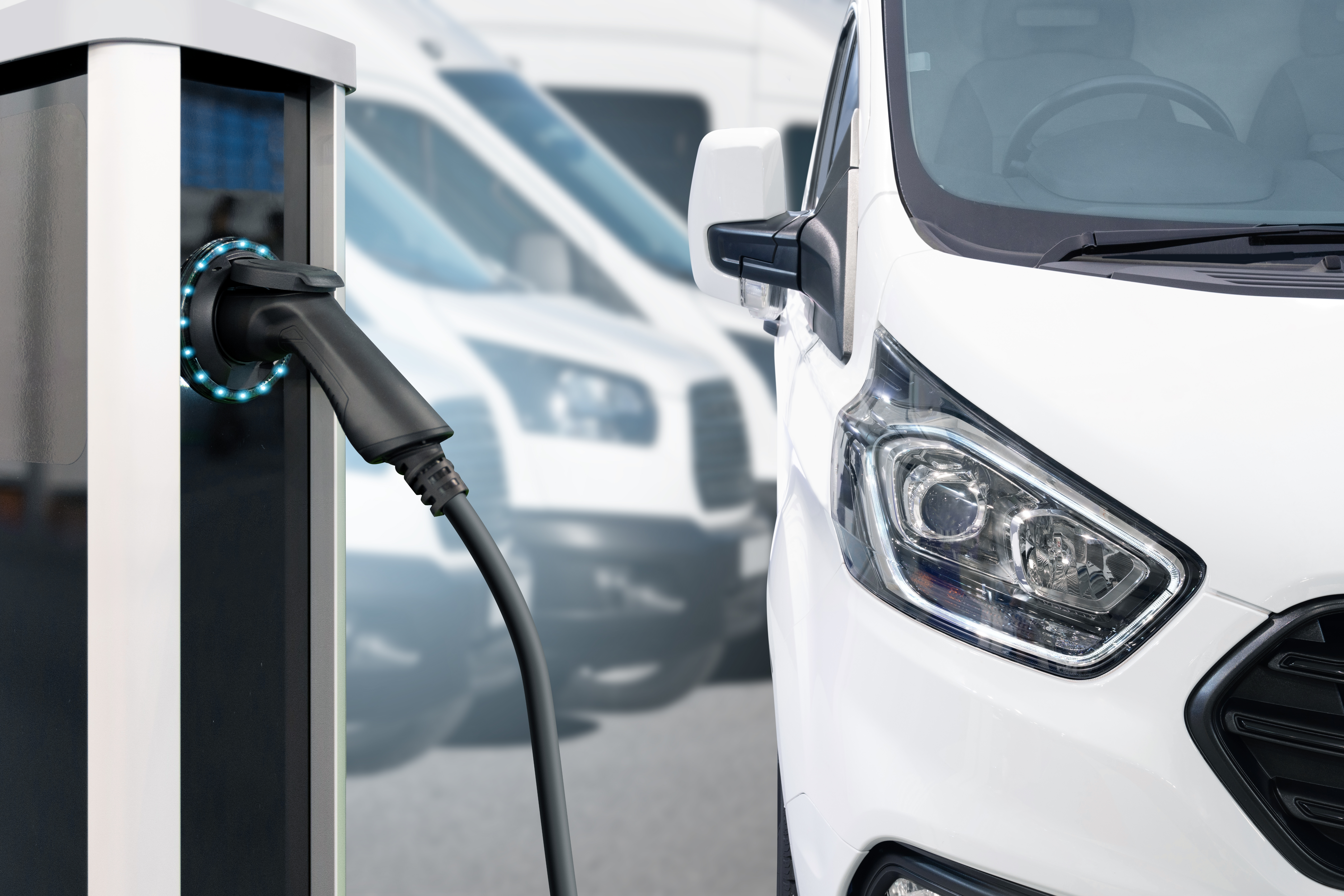
The fleet of tomorrow: eLCV innovations on the horizon
As the countdown to the 2035 ICE vehicle ban draws ever closer, van fleet managers are at the forefront of a significant industry shift.
The introduction of the Zero Emission Vehicle (ZEV) mandate, which requires a progressive increase in the sales of zero emission vans—starting from 10% in 2024 and escalating to 70% by 2030—has magnified the urgency for manufacturers to innovate and embrace greener solutions.
This transition is not merely a regulatory compliance challenge, but a pivotal moment in the evolution of commercial transport.
In recent years, the capabilities of electric Light Commercial Vehicles (eLCVs) have advanced remarkably, offering enhanced battery life, superior designs, and more competitive pricing, marking a new era in the electric van market. But what innovations and developments can van fleet managers expect as the industry continues to evolve?
Here, we reveal what could be coming to a road near you soon.
Battery technology
One of the biggest barriers to the widespread adoption of eLCVs has been concerns over range.
Fleets and their drivers often worry whether an EV can meet their daily operational needs without frequent recharging.
However, recent advancements in battery technology are addressing these concerns head-on, significantly enhancing both the performance and usability of electric vans.
For instance, Mercedes has announced its new VAN.EA – or Van Electric Architecture – platform, set to underpin all new eLCV models from 2026. A driving range of at least 500km – 310 miles – is being targeted for those with the premium version of the platform.
A more imminent arrival is the latest generation Renault Master E-Tech van which goes on sale this spring. The 87kWh battery has a class-leading 286-mile WLTP range, which has been made possible by the vehicle’s ‘aerovan’ design and new, fully optimised platform which is said to reduce power consumption by more than 27% compared with the current generation.
Another common complaint around eLCVs is charging time.
Lengthy charging periods translate into less time on the road, directly impacting productivity. Manufacturers have taken this into consideration with their latest models, with the latest vans rolling off production lines having much quicker charge times.
Take, for example, the upcoming Ford E-Transit Courier which boasts a 10 to 80% recharge in less than 35 minutes, with just a 10-minute charge adding 54 miles to the vehicle’s range.
Payload and towing capabilities
A drawback of eLCVs has typically been the reduced payload compared to ICE models. But with advancements in battery technology and vehicle design, manufacturers are starting to overcome this challenge and the gap is being bridged. Electric vans with much improved capabilities are coming to market, such as the new Citroen E-Relay, which boasts a payload capacity of 1,500kg.
Towing capability is another critical requirement for many industries and traditionally, it’s where eLCVs have fallen short compared to their petrol and diesel counterparts.
Manufacturers, however, are now rolling out electric vans with much improved towing capacities. The Ford E-Transit Custom van is a prime example, offering an impressive 2,000kg towing capacity.
Design enhancements
Modular designs stand at the cutting edge of electric van innovation, providing a high level of flexibility and customisation opportunities.
These set-ups allow drivers to make easy adjustments to interior layouts, storage solutions and on-board equipment.
Kia’s recently announced Platform Beyond Vehicle (PBV), for example, is a versatile electric minivan with a flexible chassis that supports up to five different configurations through movable modules. This allows the vehicle to change based on user needs, whether the driver needs a delivery van, taxi or simply needs to use it for personal trips.
Modular designs in electric vans dramatically reduce the need for businesses to invest in multiple specialised vehicles, offering a cost-effective solution that can adapt to evolving business models and market demands.
Another example of eLCV design innovation is in B-ON’s upcoming Pelkan electric van. This integrates smart dispenser technology with rotating shelves to streamline the delivery process, scanning the address of each parcel and using GPS to retrieve the package when nearing the destination. This helps reduce loading and unloading times, while boosting driver productivity.
Technology company Helixx is also redefining eLCV design with its groundbreaking 3D-printed electric van. Announced late last year, the van can be built by local businesses at ‘mobility hubs’, connecting printed parts effortlessly without welding and cutting the vehicle manufacturing process by up to half. The vehicles can also be produced in as little as 180 days, offering fleets a rapid turnaround time that can benefit operational planning and scalability.
Going even greener
eLCVs are already helping fleets to reduce their carbon footprint and as the 2035 ICE ban deadline looms closer, it’s likely they will evolve to become even greener.
UK start-up, Watt Electric Vehicle Company, is currently developing an eLCV out of recycled aluminium. Its eCV1 is expected to last more than 20 years, much longer than the average commercial vehicle, has a light kerb weight, efficient energy use and large payload capabilities.
Meanwhile, Japanese automaker, HW Electro, has manufactured a pint-size van that harnesses solar power to charge its battery.
The future
Fuelled by technological advancements, electric van innovations are gaining momentum.
Indeed, we’re increasingly likely to witness the adoption of technologies already making waves in electric cars – such as artificial intelligence, augmented reality and autonomous driving capabilities.
As we approach 2035, the gap between electric vans and their ICE counterparts will undoubtedly continue to narrow, ultimately leading to eLCVs that match diesel vans in specification and performance.
